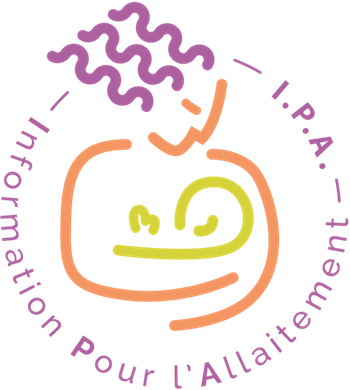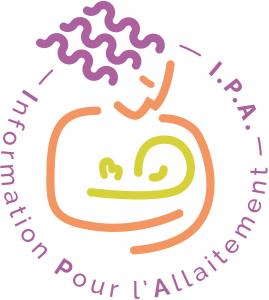Catégories
 > Santé > Soutien allaitement > Soutien du personnel médical et soignant > Santé > Soutien allaitement > Soutien du personnel médical et soignant
Soutien du personnel médical et soignant |
Documents disponibles dans cette catégorie (63)
Article : texte imprimé
Swathi Vanguri, Auteur ; Hannah Rogers-McQuade, Auteur ; Natasha K. Sriraman, Auteur |Article : texte imprimé
Vijaya K. Hogan, Auteur ; Diane L. Rowley, Auteur ; Pauline E. Brooks, Auteur |Background: Equity in breastfeeding could reduce excess morbidity and mortality among children and mothers of color. Few programs that support breastfeeding have been evaluated for their capacity to create equity. The aim of this study was to as[...]Article : texte imprimé
Ryoko Pentecost, Auteur ; Jane S. Grassley, Auteur |Background: Increasing the number of infants who are breastfed has become a worldwide health priority because of the extensively documented health and economic benefits of breastfeeding for mothers and their children. It is unfortunate that ado[...]Article : texte imprimé
Residents and medical students need to work with physicians who specialize in breastfeeding medicine, just like they do for every other subspecialty they elect to spend time with. Even though residents and medical students cannot spend time in e[...]Article : texte imprimé
Breastfeeding initiation rates in developed countries are steadily increasing, in part due to successful breastfeeding promotion campaigns and practices supportive of early breastfeeding, yet breastfeeding duration rates remain low. This disconn[...]Article : texte imprimé
Alexandra Lundquist, Auteur ; Brent A. McBride, Auteur ; Sharon M. Donovan, Auteur |Introduction: The childcare setting remains largely unexplored as a potential barrier to breastfeeding continuation and, therefore, the lack of interventions targeting childcare providers may be a missed opportunity for improved breastfeeding su[...]Article : texte imprimé
This issue of JHL addresses an important discussion about costs and resources utilized in breastfeeding support interventions. Evidence of breastfeeding has been well established. This includes impact on cognitive processing, infant health statu[...]Article : texte imprimé
Zelalem T. Haile, Auteur ; Reena Oza-Franck, Auteur ; Ilana R. Azulay Chertok, Auteur |Background: Exclusive breastfeeding is recommended in the first 6 months of life, especially for infants born to women with a history of gestational diabetes mellitus (GDM). Yet, women with a history of GDM face challenges with exclusive breast[...]Article : texte imprimé
Jennifer Hicks, Auteur ; Elizabeth Morse, Auteur ; David K. Wyant, Auteur |Introduction: This study utilized a cross-sectional qualitative and quantitative interview-based survey to capture the infant feeding practices and barriers to exclusive breastfeeding for women in methadone maintenance therapy. Participants were[...]Article : texte imprimé
Rebecca M Cantu, Auteur ; Marie S. Gowen, Auteur ; Xinyu Tang, Auteur |Background: Breast milk is considered the normative nutrition for human infants, and exclusive breastfeeding for the first 6 months of life is recommended by several national and global societies. Female physicians are a high-risk group for earl[...]Article : texte imprimé
Erin McElderry Bascom, Auteur ; Melissa A. Napolitano, Auteur |Background: Although postpartum depression is associated with lower breastfeeding initiation rates and shorter breastfeeding duration, the potential mechanisms through which this relationship functions are not well understood. Objective: Th[...]Article : texte imprimé
Jennifer Schindler-Ruwisch, Auteur ; Kathryn E. Phillips, Auteur |Background Pandemic-related restrictions have limited traditional models of lactation support. Research Aims The primary aim of this study was to determine changes to breastfeeding support services during the coronavirus-2019 pandemic accor[...]Article : texte imprimé
Teresa A. Orth, Auteur ; David Drachman, Auteur ; Patricia Habak, Auteur |Background: Pregnancy is becoming more common in residency, and about 80% of residents are female. This leads to questions of breastfeeding, work demands, and perception of burden by colleagues. This study was designed to assess experiences of ([...]Article : texte imprimé
Harumi Reis-Reilly, Auteur ; Nikia Fuller-Sankofa, Auteur ; Calondra Tibbs, Auteur |To improve equity in breastfeeding rates and eliminate breastfeeding disparities, the Centers for Disease Control and Prevention, Division of Nutrition, Physical Activity, and Obesity in 2014 funded the National Association of County and City He[...]Article : texte imprimé
Elizabeth Hegedus, Auteur ; Diana J. Oakes, Auteur ; Majella Hill, Auteur ; Helen E. Ritchie, Auteur ; Debra S. Kennedy, Auteur |Background: MotherSafe is a free telephone-based counseling service for Australian consumers and health care providers concerned about drug exposures during pregnancy and breastfeeding. Calls relating to breastfeeding are relatively common and a[...]Article : texte imprimé
Juhee Kim, Auteur ; Rose Ann Mathai, Auteur |Background: The environment or setting to which an infant is exposed is crucial to establishing healthy eating habits and to preventing obesity. This study aimed to compare infant feeding practices and complementary food type between parent care[...]Article : texte imprimé
Nicola Geoghegan-Morphet, Auteur ; Doris Yuen, Auteur ; Esther Rai, Auteur |Exclusive breastfeeding is the optimal method of infant feeding for the first 6 months of life for both term and preterm infants. This recommendation is based on indisputable evidence that breastfeeding offers numerous infant and maternal health[...]Article : texte imprimé
Margot A. Hankel, Auteur ; Florentina C. Kunseler, Auteur ; Mirjam Oosterman, Auteur |Objective: Breastfeeding can be challenging for new mothers. Women with high breastfeeding self-efficacy are more likely to breastfeed with confidence and are more likely to succeed in breastfeeding. The aim of this prospective longitudinal stud[...]Article : texte imprimé
Caixin Yin, Auteur ; Xi Su, Auteur ; Qiuxia Liang, Auteur |Objective: To evaluate the effects of a baby-led self-attachment breastfeeding support intervention on the prevalence and duration of exclusive breastfeeding and nipple pain at 3 days, 6 weeks, 3 months, and 6 months postpartum among Chinese mot[...]Nouveauté
Article : texte imprimé
Sharareh Gharib, Auteur ; Molly Fletcher, Auteur ; Richard Tucker, Auteur |Background: Breastfeeding is associated with major benefits for high-risk infants born prematurely, yet this population faces significant challenges to breastfeeding. Lactation services provide successful interventions, yet the impact of lactat[...]Article : texte imprimé
Kelly K. Gurka, Auteur ; Paige P. Hornsby, Auteur ; Emily Drake, Auteur |Background: Low-income women have the lowest rates of breastfeeding in the United States. Greater understanding of factors that predict intention to feed artificial breastmilk substitute is needed to inform the design and timing of interventions[...]Article : texte imprimé
Rosann Edwards, Auteur ; Wendy Peterson, Auteur ; Joy Noel-Weiss, Auteur |Background: Young mothers have the lowest breastfeeding rates in Canada. Young mothers and their infants who access maternity shelters are especially at risk for poor outcomes, some of which breastfeeding may help to mitigate, yet little is kno[...]Article : texte imprimé
Jane Morton, Auteur |Since the early 2000s, there has been encouragement in the lactation/midwifery/nursing literature to use a hands-off approach to lactation support, believing this empowers mothers and demonstrates respect for their bodies.1,2 These recommendatio[...]


























